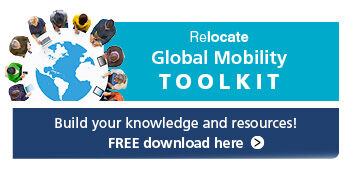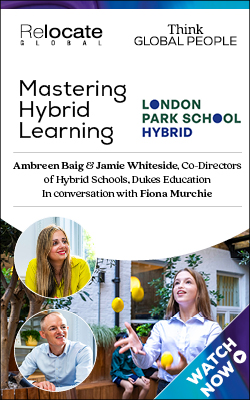The classroom of the future: what role for technology?
Coronavirus has touched and changed all areas of our lives. How education is accessed and delivered is no exception. But what lessons from e-learning in the pandemic will stand the test of time?
How many students are learning virtually?
At the height of the first lockdown in April 2020, the World Economic Forum estimated that 1.2 billion children and young people in 186 countries were e-learning, a jump from 300 million before the pandemic. The WEF questioned whether this sudden shift to online learning would persist post-Covid.Research suggests that online learning has been shown to increase retention of information and is more productive. However, questions remain around equality of access to online learning and what is being lost from classroom learning.These were some of the important topics panellists at the “International Schools, Innovation and the Response to the Pandemic” webinar discuss in a conversation available now to view.Jitin Sethi, Partner, Global Education Practice, L.E.K. Consulting, Ashwin Assomull, Partner, Global Education Practice (L.E.K. Consulting). David Willows, The International School of Brussels and Jonathan Taylor, Principal, International School Zurich North, (Cognita) offer their perspectives as part of Relocate Global’s Great International Education and Schools Fair.From distance learning to integrated approaches
Reflecting on lockdown learning and looking ahead, Ashwin Assomull observes that for many schools and teachers, working out how to deal with 20+ students learning from home, some with not the ideal access to a quiet space or device, has not been easy. However, in his assessment and from his experience, “schools have done pretty well.”“Initially, parents felt a lot of pressure on them and felt they were taking the teachers’ role,” Mr Assomull explains. “Now schools are really working hard with teachers in terms of how they have migrated from distance learning to actual online product.”With so many students still remote learning around the world, there is plenty of opportunity for students, international schools and teachers to share their experiences and learn from each other. This is something Mr Assomull has also seen.“We’ve been fortunate enough to see private schools sharing with state schools so there has been lots of sharing and banding together. Teachers are also exchanging notes and collaborating to come up with solutions.”Online learning environments– from delivery to experience
As schools get up to speed with curriculum delivery, Mr Assomull is now seeing the education sector pay more attention to creating optimum learning environments for all students.“The focus has shifted from online experience to the more social and emotional aspects of school and how we can continue that,” says Mr Assomull. “We are not there yet, but schools are making great strides.”For David Willows, this involves how we move from physical classrooms to virtual learning and personal connections. “I think one of the things we’re all realising is that learning is integrally connected to physical space. Some students have gained from e-learning because it suits their learning style. “But for others, have we almost lost sight of so what are schools for? Is it just a the ticket to university or about future health? But actually, it’s the journey. Schools are life. There’s a sense of journeying that some of our students might feel they have lost.”Schools like the International School of Brussels that understand the value of transition support for students, their families and teaching staff are among those who have a head-start in managing change in this arena. The International School of London for example set up workshops for parents and also sessions for teachers to ensure wellbeing in this time of change, and to ensure social connections and bonds continue to be developed as a school community.Getting engagement online
But it is clear that further support in this area is also going to be needed, especially as schools around the world are entering subsequent lockdowns and plans are made for summer exam sessions.A UK study by the National Foundation for Educational Research (NFER) reports that teachers believe a third of pupils were not engaging with their schoolwork in the first lockdown. Ninety per cent of teachers were also concerned their students were doing less work than they normally would at that time of year. The issue of engagement does raise significant questions about how students can achieve their potential in the online environment.One school that is directly addressing this challenge is The Bridge School, an international online private school offering a US K-12 curriculum. Even before Covid-19, online learning platforms were a growth area in the education sector. With parents reassessing their own home lives and where they live and work, as well as enjoying the family time that comes with enforced lockdown, schools like these could appeal to an even wider audience. How have they addressed this issue of engagement?Leveraging the benefits of online delivery for pupil engagement
“Students need consistency and simplicity to be able to focus on content,” says Julie Taylor, Head of School at The Bridge School. “One of the biggest mistakes a school can make when moving to the online platform is requiring teachers to figure out what and how they want to teach online. This year, my local middle school has used three different online platforms for their students. The user experience has been terrible and confusing.“Don’t get me wrong – teachers are, in fact, the subject matter experts. I would argue, however, that the ‘holistic’ experience for the student shapes the foundation for learning. It is the job of the school administration to pick a platform that will be utilised across the entire school.“Speaking of user experience, taking a curriculum that was designed for in-person instruction and posting PDF worksheets online will not motivate your students to engage. Lecturing in Zoom for hours will not produce the same results as in-person instruction.“To get the best out of distance learning you need a solid digital curriculum that combines reading, short bursts of video or live instruction, and interactive practice opportunities.”The Bridge School’s foundation is the StrongMind digital curriculum. “Our students and families have found this curriculum to be engaging and interactive,” says Julie Taylor. “All of the textbooks and reading materials are found within the online system. Teachers love it because it supplements (it does not supplant) the instruction they are providing. “Additionally, the digital curriculum gives the teachers real-time tools and data to understand how students are doing in the course, including what areas students may need additional remediation. Teachers can easily see which students to invite to a small group live session covering specific standards. Students can use this type of curriculum in an in-person model and easily transition to a distance learning model with no interruptions.”The future of education?
International schools are supporting the next generation of global citizens to thrive. The shift – temporary for most, perhaps in some aspects permanent for others as technology becomes more embedded in classrooms post-pandemic – to online and remote learning has cast light on what is important for education, schools, students and families.As we look forward to the future, it will be fascinating to see what lessons have been learnt from the past year and what shape learning takes in schools in the years to come.Meet the speakers
Find out more about all of the speakers and panelists participating in the Great International Education & Schools Fair.Find the perfect school from the comfort of your home
Now is the ideal time to discover the right school for your child. Many schools host Open Days and Virtual Events throughout the autumn. Relocate Global's Great International Education & Schools' Fair is also great opportunity to showcase the schools around the world that welcome relocating families and international students, not only at the beginning of a new academic year, but also at any time, with rolling admissions to meet the needs of families on the move.The next Great International Education & Schools' Fair is coming in spring 2021
<< Return to the Great Education & Schools' Fair homepage
Subscribe to Relocate Extra, our monthly newsletter, to get all the latest international assignments and global mobility news.Relocate’s new Global Mobility Toolkit provides free information, practical advice and support for HR, global mobility managers and global teams operating overseas.
 Access hundreds of global services and suppliers in our Online Directory
Access hundreds of global services and suppliers in our Online Directory©2025 Re:locate magazine, published by Profile Locations, Spray Hill, Hastings Road, Lamberhurst, Kent TN3 8JB. All rights reserved. This publication (or any part thereof) may not be reproduced in any form without the prior written permission of Profile Locations. Profile Locations accepts no liability for the accuracy of the contents or any opinions expressed herein.










































